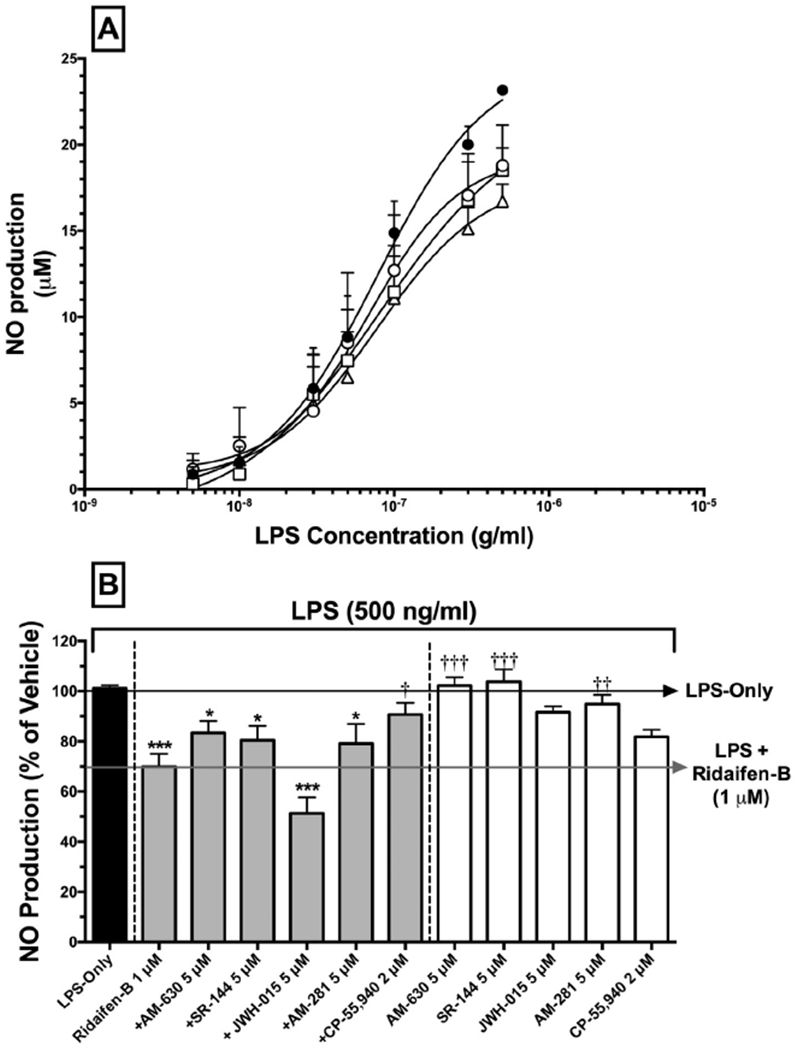Fig. 3.

RID-B reduces NO production in LPS-stimulated RAW 264.7 macrophages in a cannabinoid-dependent manner. A) RAW 264.7 macrophages were incubated with LPS-alone (filled circles), LPS + 300 nM (open circles), LPS + 500 nM (open squares), or LPS + 1 μM of RID-B (open triangles) for 48 h. Supernatants were analyzed for presence of nitrite using the Greiss reagent. Data represent the mean ± SEM for 3–5 experiments conducted in triplicate. B) RAW 264.7 macrophages were treated with LPS-alone (black bar), LPS + RID-B alone, LPS + RID-B plus cannabinoids acting via CB1 and/or CB2 receptors (gray bars), or LPS with cannabinoids alone (white bars). Statistical analysis to determine differences between treatments employed a one-way ANOVA with Dunnett’s multiple comparison post-hoc test. Asterisks denote statistically significant differences from vehicle-treated cells (*p < 0.05, **p < 0.01, ***p < 0.001). Crosses signify statistical differences from RID-B 1 μM treatment. (†p < 0.05, ††p < 0.01, †††p < 0.001).
